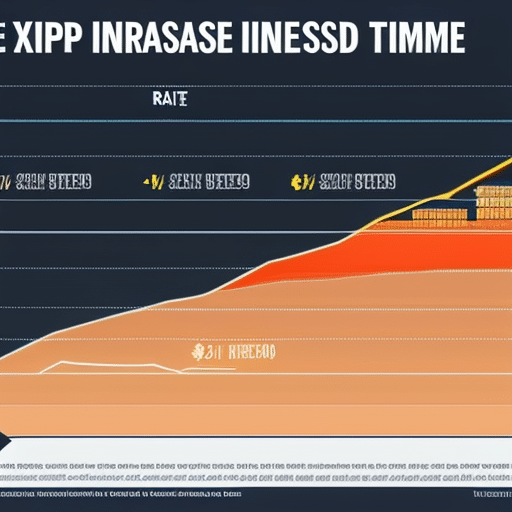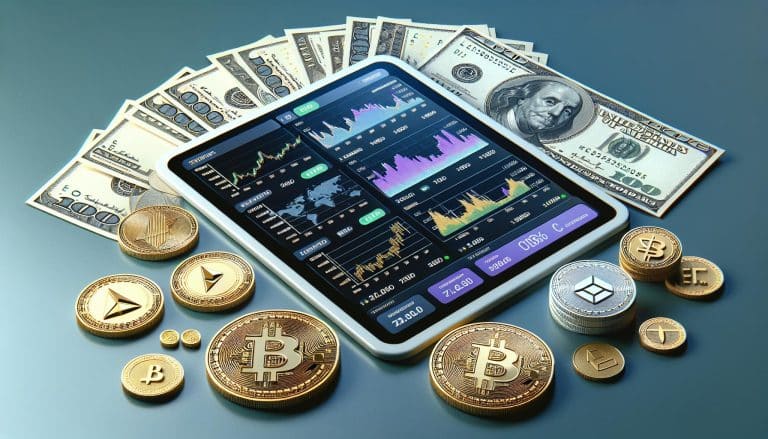Xrp’s Effect On Central Bank Currency Controls
XRP has taken the world by storm, shaking up traditional global banking systems in ways that have never been seen before. It is a revolutionary technology that has the potential to revolutionize global finance and challenge the way central banks control their respective currencies. This article will explore the impact of XRP on central bank currency controls, its benefits and risks for central banks, its international implications, regulatory challenges and future prospects. By delving into this topic we can gain a better understanding of how this digital asset may shape our financial future.
Overview of XRP
XRP is an open-source, distributed ledger technology that enables fast and secure transfers of money between two parties without the need for a third party intermediary. It is a blockchain-based cryptocurrency designed to facilitate the transfer of funds across different currencies in a decentralized manner. XRP has become increasingly popular in recent years due to its low transaction fees and rapid speed of transactions, making it attractive to those seeking faster alternative payment methods. The decentralized nature of XRP allows users to transact peer-to-peer without relying on banks or other financial institutions. This provides users with greater autonomy and control over their finances, which may have implications for central bank currency controls. As such, XRP has the potential to disrupt existing systems of monetary policy by allowing individuals access to cheaper payments and wider financial inclusion. With this in mind, it is important to consider the impact of XRP on central bank currency controls.
Impact of XRP on Central Bank Currency Controls
Cryptocurrencies have the potential to disrupt traditional central banking systems by providing a decentralized financial system, potentially impacting currency control mechanisms. XRP is a native cryptocurrency of the Ripple platform and is designed for fast and secure cross-border payments. It has the potential to affect central banks’ ability to influence monetary flows, liquidity management, and exchange rates:
- XRP could provide low-cost international money transfers that are faster than traditional methods. This would reduce costs associated with remittances and make it easier for people to send money across borders without relying on third parties like banks.
- XRP could enable more efficient capital flows as its transactions are not subject to the same restrictions as other currencies. This could allow investors from different countries access to investments they wouldn’t be able to access through traditional means.
- XRP’s distributed ledger technology allows it to operate independently of any government or central bank control, making it difficult for authorities in one country to prevent inflows or outflows of funds from another country.
- The use of XRP can also help facilitate greater data transparency between central banks and other international entities, leading to better insight into global liquidity patterns and movement of funds across borders.
- Finally, using XRP can help reduce counterparty risk associated with foreign exchange transactions by having transactions settled instantly on the blockchain rather than waiting days while counterparties fulfill their obligations.
These features demonstrate how XRP can have an impact on currency controls employed by central banks, allowing them greater flexibility in managing monetary policies and enabling more efficient capital flows across borders.
Benefits of XRP for Central Banks
The Ripple platform and its native currency, XRP, offer numerous advantages to central banks in terms of monetary policy management, overseas transactions, and liquidity tracking. One of the main benefits is the speed and cost-effectiveness associated with XRP. The decentralized ledger technology that underpins XRP allows for rapid settlement times—often within seconds—and offers an efficient alternative to traditional methods of money transfer. This can reduce the amount of time required for international payments or transfers, which is beneficial for central banks who often need to manage large amounts of currency between countries. Additionally, using XRP eliminates a considerable amount of friction from the transaction process as the decentralized ledger technology eliminates many steps associated with traditional banking systems. This can result in reduced costs overall and improved liquidity monitoring processes for central banks. These are just some of the potential benefits that could be realized by central banks when utilizing XRP. By transitioning away from traditional processes such as international wires or SWIFT messages and towards more modern technologies like XRP, there are numerous advantages that could be reaped by those overseeing currency controls at a central bank level. With this in mind, it is important to consider any potential risks associated with using digital currencies before making a decision on whether or not to adopt them into their operations.
Potential Risks for Central Banks
Despite the potential advantages of digital currencies, central banks must also consider any associated risks before integrating them into their operations. The main risk factors for central banks include:
- Currency stability: Central banks must ensure that the introduction of new currency does not destabilize the existing currency and affect its value in international markets.
- Financial stability: Central banks need to guarantee that the use of XRP would not lead to a significant increase in volatility or inflation rate in order to maintain financial stability.
- Operational risks: Central banks should take into account any operational risks such as technical difficulties, security threats, and data privacy concerns when considering the adoption of XRP for payments and settlements systems.
- International implications: There is a risk that XRP could be used by countries as an alternative means of circumventing international sanctions or capital controls, which could have serious implications on global economic policy and financial markets.
Overall, these potential risks need to be carefully assessed before central banks make a decision about whether or not to adopt XRP as a payment solution; failure to do so may result in greater instability and disruption within their respective economies. As such, it is essential for central banks to understand all possible consequences before they embark on introducing XRP into their existing frameworks and operations. With this understanding, they can then proceed towards determining how best to manage any associated risks while ensuring currency stability and financial integrity at both domestic and international levels.
International Implications
Given the nature of digital assets, there is an inherent risk that their use may be used by certain nations in circumventing international sanctions or capital regulation. Ripple’s XRP facilitates cross-border payments and its decentralized ledger provides a secure system ideal for sending large amounts of money quickly without having to rely on intermediaries such as banks. This has the potential to enable countries to evade international financial restrictions imposed by governments or other central authorities, making it easier for them to access funds. In addition, XRP can also be used to bypass capital controls, which restrict the flow of currency out of a country and into foreign markets. As a result, it could allow countries with strict currency regulations to more easily transfer money abroad without facing significant resistance from their central bank. Thus, XRP poses both risks and opportunities for central banks when it comes to regulating cross-border payments and managing capital flows internationally. With these implications in mind, the focus now shifts towards understanding the regulatory challenges posed by this emerging technology.
Regulatory Challenges
The international implications of XRP have been far-reaching, with the cryptocurrency’s influence extending beyond traditional financial networks to other countries. However, the increasing utilization of XRP poses a number of regulatory challenges for central banks regarding currency controls. Financial incentives can be offered to those utilizing XRP as an alternative form of payment, which may incentivize people to use it more often than their domestic currencies. Additionally, technological advances have enabled faster and cheaper transactions than what is typically available through traditional banking systems. This offers further incentive for using XRP instead of fiat currency, making it difficult for governments to maintain control over their own national currencies. As central banks struggle to regulate and control the usage of digital assets such as XRP, there is a need to consider how best to address these challenges while still ensuring economic stability in the country.
The Future of XRP
As digital assets continue to expand, the potential of XRP and its future implications must be considered. Ripple’s XRP is a digital asset that has been used as a type of bridge currency between two different currencies, making it easier for financial institutions to move money internationally. It has gained global acceptance and is being adopted by many banks, such as Santander Bank in Spain and Mizuho Financial Group in Japan. Despite this global acceptance, there are still some interoperability challenges associated with the implementation of XRP within central bank currency systems.
In the future, XRP could become an important element in international payments processing due to its speed and cost-effectiveness. This could further reduce the need for banks to maintain foreign exchange reserves or use other forms of liquidity management when making cross-border payments. Additionally, it could also lead to more efficient capital controls by central banks around the world since they would have more control over their own currencies when using XRP instead of relying on traditional foreign exchange markets. Therefore, XRP’s impact on central bank currency controls should not be underestimated moving forward.
Frequently Asked Questions
What is the difference between XRP and other digital currencies?
XRP is a digital currency that differs from other digital currencies in its use of blockchain technology to facilitate fast, secure transfers with low transaction fees. Unlike stablecoins, XRP can be held in a digital wallet and used for more complex transactions. In comparison, other digital currencies are often limited to simple purchases.
How can XRP help facilitate faster international payments?
XRP can facilitate faster cross border settlements and currency exchanges due to its decentralized digital ledger technology. XRP eliminates the need for intermediaries, allowing for near-instantaneous international payments with low transaction fees.
How can central banks use XRP to reduce costs associated with cross-border payments?
Allegorically speaking, XRP can reduce the friction of cross-border payments by enabling transparent transactions. Analytically, this would mean central banks could lower costs associated with such payments by utilizing the blockchain technology behind XRP to ensure secure and efficient processing.
What are the potential security risks associated with XRP?
The potential security risks associated with XRP include a lack of regulatory oversight, as well as privacy concerns due to the use of blockchain technology. These factors may create an environment where malicious actors can exploit the system for their own gain.
What are the implications of XRP for global financial markets?
XRP’s faster transaction rates and increased transparency could have significant implications for global financial markets. It may lead to more efficient transactions, improved liquidity, and deeper capital markets. Increased competition among currencies could also lead to lower costs for international payments.





